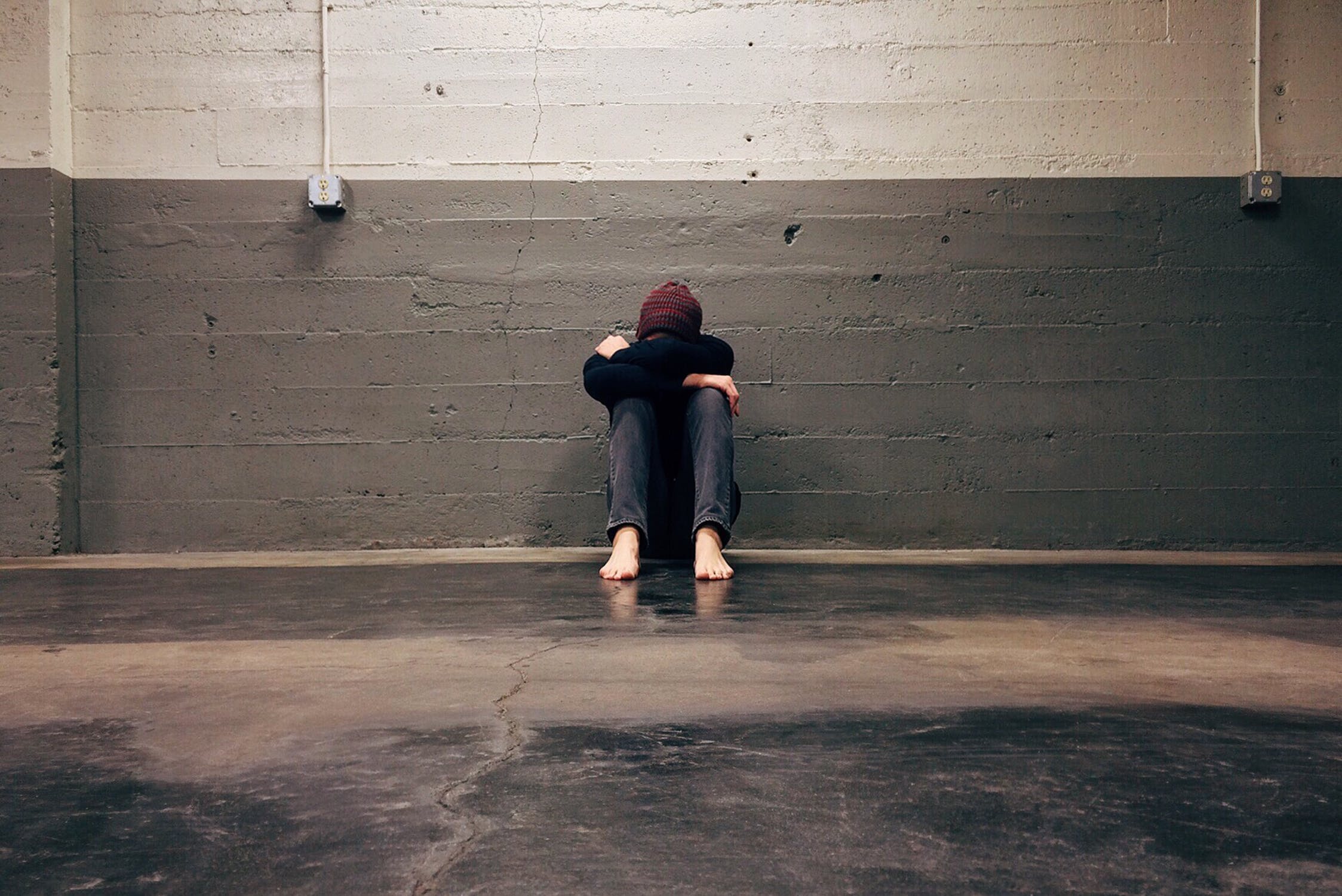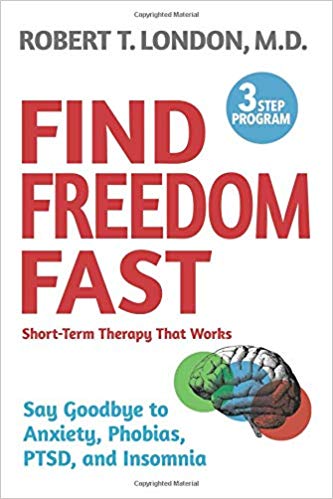
Anxiety levels are on the rise. The Anxiety and Depression Association of America reports that 40 million American adults suffer from an anxiety problem or disorder. The reasons for this epidemic are many. Anxiety runs in families, so genetics account for some of the increase; for others, learned behaviors are to blame. What is clear is that various situations, such as relationship problems, work-related issues, dramatic changes in climate, privacy concerns tied to technology and social media, and a polarized political environment can lead to anxiety for many people.
In some cases, economic hardships are at the root of anxiety. Thanks to structural changes in the U.S. economy, many people find themselves having to work two or even three jobs to be able to buy food or pay the rent or the mortgage. This kind of financial stress can lead to symptoms such as rapid heartbeat, shortness of breath, excessive sweating, tingling/numbness, choking, insomnia, nightmares, even chest pain and dizziness with the potential of fainting or collapsing. Tremendous anxiety also can lead to frustration and anger, which can manifest in physical and verbal abuse, and abuse of opioids, alcohol and other substances. Such severe responses could occur, considering the magnitude of the stressors.
In short, situational anxiety is a major psychosocial problem that needs to be addressed—not unlike the epidemic of childhood obesity or diabetes. In my experience, some people suffering from situational anxiety also suffered from anxiety before the current stressors occurred.
Among possible treatments, very costly talk therapy can trigger even more anxiety over time. Medications for anxiety work at times but may have problematic side effects. And countless people suffering from anxiety don’t even attempt to try to get treated, due to either embarrassment or an inability to find therapy that is short term and sharply focused on treating just the anxiety problem alone.
Examples of medications that have been helpful for many anxiety disorders include benzodiazepines such as Lorazepam (Ativan) or Clonazepam (Klonopin), and selective serotonin reuptake inhibitors such as Escitalopram (Lexapro) or Citalopram (Celexa). However fast these medications may work, though, medication combined with psychotherapy appears to be more helpful in moderating the anxiety or controlling it completely. Parity for mental health care, however, continues to more of an elusive aspiration than a reality.

Learning, Philosophizing, and Action
The technique I use for treating generalized anxiety disorders involves learning, philosophizing, and action (LPA), a unique combination of cognitive-behavioral therapy techniques, relaxation and guided imagery that I developed through working with patients over many years. With the LPA technique, I explore with patients how they could have learned to be anxious in so many different situations, and why their anxiety is having a negative effect on their work, social life or current situation. Broadly speaking, LPA can be implemented in three phases:
Phase One: Learning. Think about the messages, lessons and beliefs learned that led to the anxiety.
Phase Two: Philosophizing. Look at how the faulty messages, lessons and beliefs affect behavior today.
Phase Three: Action. Focus on what can be done to overcome and unlearn this thinking.
I have found that many patients very early on are able to recall being taught to worry or fear within the environment in which they grew up. The learning part of the LPA technique quickly emerges, and a matrix of recall heightens what was learned. Of course, the challenge now is developing a treatment strategy aimed at either easing the anxiety or controlling it.
A second type of person trying to deal with anxiety might remember specific family dynamics in which a fear of dangerous things permeated the environment. For those patients, it’s important to offer insight that helps them learn how this view of the world developed, in addition to including a philosophical review of how these fears and worries might have influenced them in many areas. Philosophizing about multiple possibilities usually brings to the forefront a series of real memories that place the patient at the same level of learning as person number one, who learned it straight away.
The memories I explore most often relate to issues of insecurity, abandonment, dependence, heredity, lack of attention when stressed; and ongoing issues centering on danger, fear, or growing up surrounded with anxiety—and the notion that that anxiety is normal if it’s all you seem to know. Most patients are then able to philosophize further about these issues, giving them a concrete reason to be anxious.
The action approach revolves around the development of mental challenges that allow the patient to overcome the anxious state. John, for instance, is told over and over again to be careful when going to school or to the movies with friends because danger lurks, so a model of worry and fear gets laid down. However, when Jim goes to school or to the movies with friends, the message is that going to school and the movies is fun.
Obviously, John and Jim will grow up with different mental sets of the world around them. For the anxiety disorder patient, we need to help reprocess thoughts that lead to anxiety.
Whether anxiety is a learned response acquired in previous anxiety-producing situations or in part genetic, we need to treat it. As we substitute how school or the movies most often are good and positive experiences, the patients motivated for change, as the dialectic continues, are able to redo the wiring through these cognitive challenges, which is simply re-thinking the issues getting a different perspective on the old set of problems.
In addition, I like to add a rapid de-escalation of anxiety technique in the form of reciprocal inhibition, in which relaxation techniques are used as quick methods to control anxiety. The idea is to try visualizing a pleasant, relaxing experience, usually with eyes closed. With practice, the relaxation techniques can be used to stop the surge of anxiety quickly. When a person is able to enter a relaxed state, a state usually incompatible with anxiety, and the patient quickly gets empowered with a mastery effect.
As part of my examination of these issues, I spoke with one of my daughters-in-law, Heather Combs London. Heather, an attorney and advertising executive, was a tennis star in the South Atlantic Conference while in college. She said that, during periods of stress and anxiety in high school, college, and law school, an hour of tennis—although tiring—gave her tremendous, long-lasting relief from anxiety states.
Although that does not mean we should all become athletes, this example does suggest that alternatives exist that can reduce anxious states for those who are facing the situational anxiety that might be tied to loss of a home, health insurance, or automobile, and are unable to think clearly as a result of this severe situational anxiety.
The refocusing of thoughts through various diversions, as Heather discussed, is an example of how anxiety reduction can be self-managed. Research has shown that the use of meditation and yoga appears to offer a similar decrease in anxiety. Hypnosis, self-hypnosis, and mindfulness probably do the same thing. After all, many of these techniques appear to be different ceremonies or expressions of the same human ability we have to shift gears mentally.
The brain imaging work of Richard J. Davidson, Ph.D., of the University of Wisconsin, Madison, has shown that with regular meditation, prefrontal activity shifts from the right to the left hemisphere—reorienting the brain from fight or flight (anxiety) to a place of acceptance and commitment.
What Does All This Mean?
If we can, through these various diversionary techniques, slow or change frontal lobe or even limbic system activity without long-term or even shorter-term behavioral/cognitive strategies for anxiety treatment in these overwhelmed people, why not try doing so? By slowing or changing the activity in specific cerebral/limbic areas, we allow patients to feel better, think in a clearer manner, and become better informed about moving toward a set of solutions. However, we should keep in mind that short-term solutions, such as Cognitive Behavior Therapy (CBT) and my LPA methods, are also available.
Using the direct, focused technique of LPA, people with anxiety or anxiety disorders can use to gain control and move forward.

